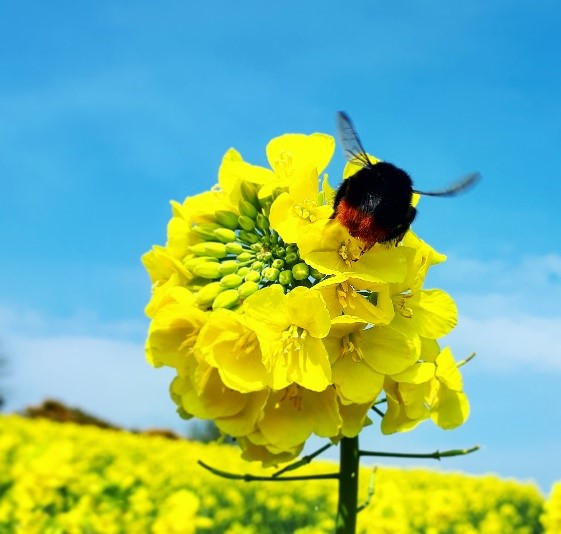Taxon-specific temporal shifts in pollinating insects in mass-flowering crops and field margins in Ireland
DOI:
https://doi.org/10.26786/1920-7603(2021)628Abstract
In intensively cropped agricultural landscapes, the vegetation in edges and hedges (henceforth “field margins”) represents an important semi-natural habitat providing fundamental resources for insect pollinators. We surveyed the pollinating insects associated with two mass-flowering crops, apple and oilseed rape, and compared the insect fauna of the main crop with that in the field margins in the grass-dominated agricultural landscapes of Ireland. Different insect groups responded differently to the presence of the flowering crop, with honey and bumble bees more abundant in crops than margins during crop flowering, but more hover flies and butterflies in margins throughout. The composition of the insect assemblage also shifted over time due to taxon-specific changes in abundance. For example, solitary bees were most abundant early in the season, whereas hover flies peaked, and butterflies declined, in mid-summer. The temporal shift in insect community structure was associated with parallel changes in the field margin flora, and, although we found no relationship between insect abundance and abundance of field margin flowers, Bombus abundance and total insect abundance were positively correlated with floral diversity. After the crop flowering period, floral abundance and diversity was maintained via margin plants, but by late summer, floral resources declined. Our results confirm the importance of field margins for insect pollinators of entomophilous crops set within grass-dominated landscapes, even during the crop flowering period, and provide additional support for agri-environment schemes that protect and/or improve field margin biodiversity. The results also demonstrate that although shifts in insect and plant communities may be linked phenologically there may not always be simple relationships between insect and floral abundance and richness.

Downloads
Published
How to Cite
Issue
Section
License
Copyright (c) 2021 Irene Bottero, Simon Hodge, Jane Stout

This work is licensed under a Creative Commons Attribution 4.0 International License.











